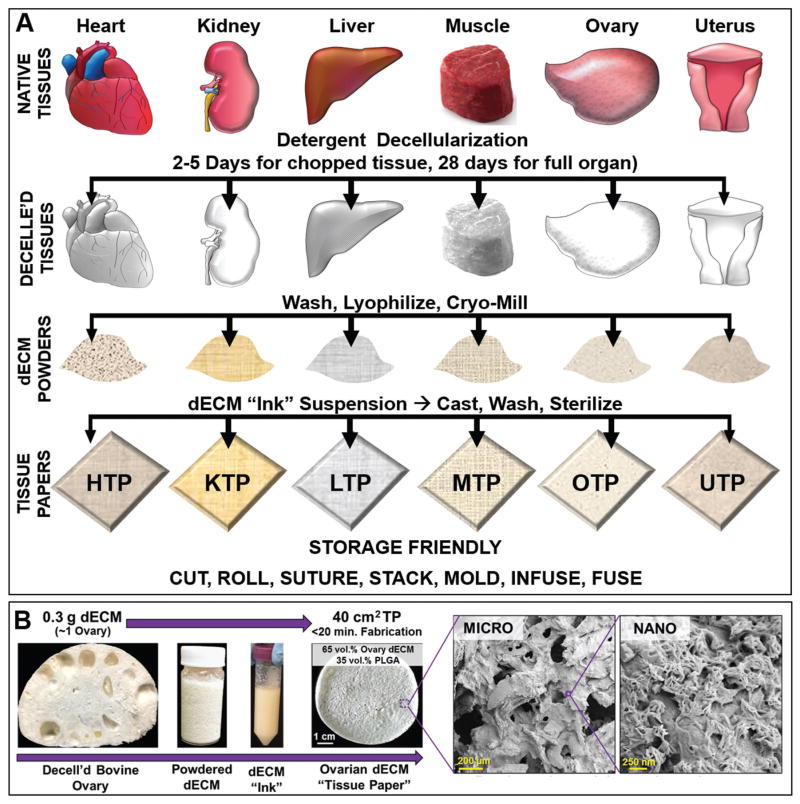Figure 2.
Schematic representation of the tissue paper fabrication process. A) Fresh organs and tissues are collected, minced, decellularized, lyophilized, and milled to obtain dry tissue and organ-specific decellularized extracellular matrix (dECM) powders. In this particular case, whole bovine ovaries and uterus, rather than pieces, were decellularized following previously established protocols for these specific organs[24] prior to lyophilization and milling. The resulting dry powders are then used to manufacture dECM suspensions. The suspensions are cast into molds and allowed to dry for several minutes to yield tissue-specific dECM tissue papers: HTP = Cardiac (heart) tissue paper; KTP = Kidney tissue paper; LTP = Liver tissue paper; MTP = Muscle tissue paper; OTP = Ovary tissue paper; UTP = Uterus tissue paper. Other than decellularization time, the TP fabrication process is fully conserved across tissue and organ types. B) Representative example of the TP fabrication process using decellularized bovine ovaries. 300 mg of dECM yields enough powder to create a dECM ink capable of being cast into 40 cm2 worth of tissue paper. The associated images illustrate the micro- and nanostructures (scanning electron images) of this OTP.

